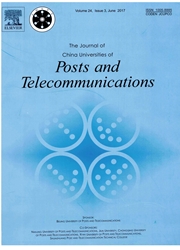

 中文摘要:
中文摘要:
这份报纸为多重输入集中于线性收发器设计多重产量(MIMO ) 干扰隧道(IC ) ,在哪个一个围住的隧道错误模型被假定。二个优化问题作为与每传输器力量限制最小化最大的 per-user 均方差(MSE ) 和和 MSE 被提出。因为这些优化问题不在他们的可变矩阵上是联合凸的,传输器和接收装置能分别地或者被优化。为每个矩阵,在限制的上面的界限被导出以便它有更少的 semidefinite 的地方,一条接近的途径被介绍,因此,这个问题能被看作 second-order-cone 编程(SOCP ) 并且得到更少的计算复杂性。与常规 S 过程方法相比,建议途径完成类似的性能,但是显著地减少复杂性,特别为有天线的大规模数字的系统。
 英文摘要:
英文摘要:
This paper focuses on the linear transceiver design for multiple input multiple output(MIMO) interference channel(IC), in which a bounded channel error model is assumed. Two optimization problems are formulated as minimizing maximum per-user mean square error(MSE) and sum MSE with the per-transmitter power constraint. Since these optimization problems are not jointly convex on their variable matrices, the transmitter and receiver can be optimized alternately respectively. For each matrix, an approximated approach is presented where the upper bound of constraint is derived so that it has less semidefinite, thus the problem can be viewed as second-order-cone programming(SOCP) and gets less computational complexity. Compared with the conventional S-procedure method, the proposed approach achieves similar performance, but reduces the complexity significantly, especially for the system with large scale number of antennas.
 同期刊论文项目
同期刊论文项目
 同项目期刊论文
同项目期刊论文
 期刊信息
期刊信息
